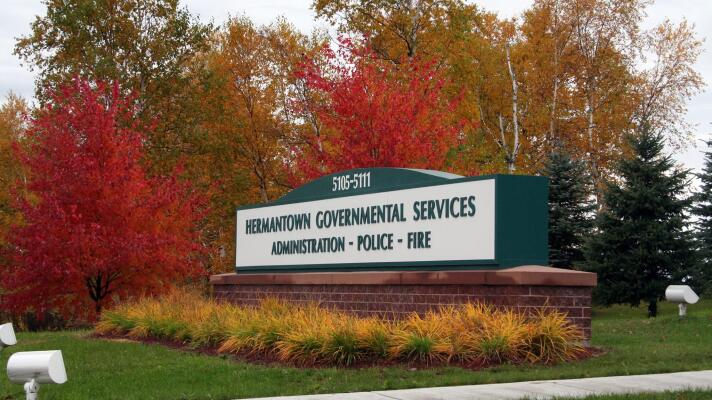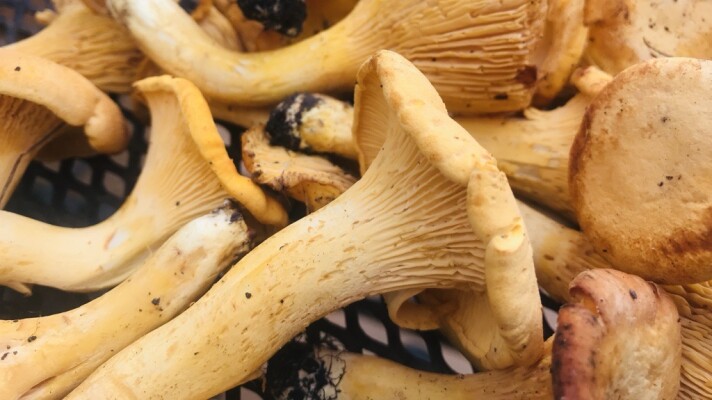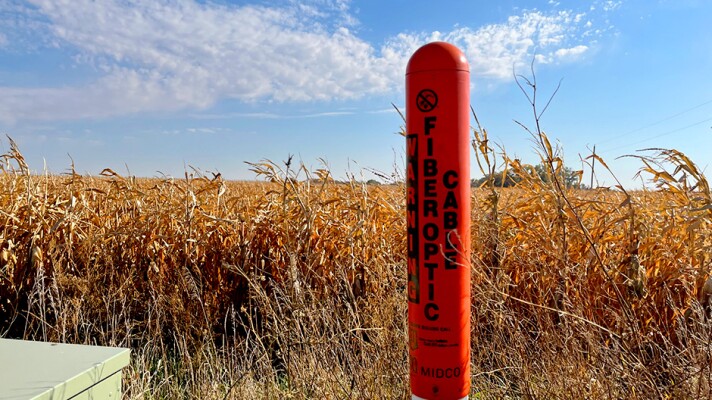ITASCA STATE PARK — Lake Itasca is almost as wild now as it was 193 years ago, when it was named by an explorer from Michigan seeking the true source of the Mississippi River.
Some of the red pines that were young then still live there now, towering above the thin wind-bent reeds of wild rice near the shore. Even from the center of the lake, the water smells like those pines, as though the lake has been steeped in their fresh needles. From that scene, it would be impossible to tell Itasca is becoming less healthy.
But it is.
The water clarity in Lake Itasca has been steadily declining for years. Nutrients that can feed harmful algae blooms and turn the water a sickly green are unusually high for a lake of its size and pristine location.
Minnesotans have done everything they can to protect this picturesque lake in an ancient woods from which the country’s great river begins. But Lake Itasca’s chemistry, shallow depth and even its unusual wishbone shape may make it particularly vulnerable. With higher temperatures in northern Minnesota allowing less ice, the lake is receiving more sunlight and a longer growing season.
Extended growing seasons tend to hurt shallow lakes with high amounts of nutrients, lakes like Itasca, said Jim Cotner, a professor and ecologist at the University of Minnesota who has studied Itasca for more than 20 years.
“Caution now would be the best thing,” he said. “We need to keep an eye on it. And we have to make sure that we do not make things any worse.”
The grade
The Minnesota Department of Natural Resources graded the health of Lake Itasca a C+, a stunningly low score for a lake with a watershed that is almost entirely undisturbed. Its water quality was particularly bad, scoring 33 out of 100, a mark that puts Itasca on par with lakes in downtown Minneapolis and St. Paul, where beaches are often closed due to algae and E. coli outbreaks.
The DNR started issuing grades to the state’s lakes in 2023 to help residents learn about their condition. The letter grade, from A+ to F — based on a 0 to 100 score — denotes the health of a lake and how far it has departed from what a lake of its size, depth and region should be. The score is based on a lake’s water quality, populations of native fish and plants and the disturbance of its shoreline and watershed.
For the most part, a lake’s health mirrors its watershed.
The most natural lakes in the state with the best fish populations and cleanest water tend to have at least 75% of their watershed intact, undeveloped and undisturbed. The most degraded lakes, overrun by pollution and invasive species, tend to have most of their watershed converted into farmland or cities.
The exception is Lake Itasca.
The reason why continues to puzzle researchers.

The legend
Itasca has been one of the most protected waters in the state since an Ojibwe guide, Ozaawindib, led explorer Henry Schoolcraft to it in 1832.
Schoolcraft was sent by what is now the U.S. Department of the Interior on a two-part mission: to bring the smallpox vaccine to the tribes in the Upper Mississippi, and to find the source of the river. His small team crossed Lake Superior and portaged 18 miles into the wilds of what was then part of the Wisconsin Territory. They journeyed through fur trading camps and outposts and witnessed the drunken brawls of cut-throats and back-stabbers.
Schoolcraft had known Ozaawindib from a past expedition that ended when the waters froze up at Cass Lake, about 80 miles short of the head of the Mississippi. They greeted like old friends. Ozaawindib, whose band had long been using the Itasca area as hunting grounds, deftly took Schoolcraft’s team across rapids and portages, and guided them through the most remote and difficult parts of the route.
“What had been long sought, at last appeared suddenly,” Schoolcraft wrote in his account of the journey. “On turning out of a thicket into a small weedy opening the cheering sight of a transparent body of water burst upon our view. It was Itasca Lake, the source of the Mississippi.”
Schoolcraft’s writings about walking across the 18-inch-deep source of the river, and the clear lake with a solitary island, captured the public’s attention.
He combined two words in Latin to come up with Itasca: veritas, meaning “true,” and caput, or “head,” meaning the genuine origin of the Mississippi.
The woods around the lake were never logged. It quickly became a destination.
In 1891, the Legislature made the lake and its woods Minnesota’s first state park. Aside from a few campgrounds, log cabins and access roads, the watershed is largely unchanged.
During the Dust Bowl of the 1930s, when a new appreciation for wild places across the U.S. took root, newspapers in Minneapolis started writing stories about how Itasca was still almost as natural as it was during Schoolcraft’s time.
The University of Minnesota built a research center near the lake in 1909 and has been sampling its water ever since.
The change
The water clarity in the lake has been steadily worsening since the 1950s, the data shows. In the late summer, when the water is typically murkiest, one could expect to see about 8.5 feet under the water in the late 1950s and early 1960s. Today it’s just over 4 feet.
Researchers and park managers say that the trend needs to be monitored, but agreed that the lake is not in crisis. Its phosphorus level, for example, is high but not to the point where it would hurt aquatic life or threaten the safety of swimmers.

What’s more concerning: If the trend continues, it’s not clear what anyone can do about it. The quickest way to turn a struggling lake around is to restore the natural wetlands and woods that surround it. With Itasca, there is nothing to restore.
Nutrient levels in Itasca have probably naturally always been on the higher side, said the U’s Cotner.
That’s because the lake is deceptively shallow. While small pockets reach 40 feet deep, most of the lake is less than half that.
That keeps the lake warm, allowing aquatic plants and algae to flourish. It also makes Itasca more susceptible to increasing air temperatures.
“Climate change is having an impact on all of our lakes, but it’s probably accentuated more in Itasca,” Cotner said. “So much of the volume of the lake is right at the surface.”
Algae blooms and bacteria outbreaks are typically signs of a scarred landscape, spurred by the nutrients in manure, sewage, fertilizer and agricultural and urban runoff that finds its way into a lake.
But outbreaks have been increasingly common in some of the most remote waters in the Upper Midwest, such as in Isle Royale or deep inside the Boundary Waters Canoe Area Wilderness.
Something else might be happening at Lake Itasca. On summer evenings, without fail, and especially on holiday weekends, there is a line of small campfires burning around its shore from the campgrounds of one of the most beloved parks in the state.
He hasn’t been able to test his theory, but Cotner expects that the nutrients in all the soot from 134 years of campfires have been slowly building up inside the lake. The frequent smoke from Canadian wildfires must be finding its way into the water as well, Cotner said.
To investigate the problem, the Science Museum of Minnesota has taken samples of the sediment buried under some of these remote lakes.
Sediment cores show the history of a lake’s nutrient concentrations from long before the development of Minnesota. The samples showed that some lakes are natural outliers and have always had high concentrations of phosphorus and nitrate. Now as summers linger and heavy rains increase, these lakes may be producing even more nutrients through their internal systems, said Adam Heathcote, the director of the Science Museum’s Department of Water and Climate Change.
“That’s what we need to find: When do we go from a lake that is just a naturally productive system to something that is dominated seasonally by algal blooms,” Heathcote said. “That’s the tipping point we’re interested in.”
Heathcote and his team tried to sample the sediment cores of Itasca, but they couldn’t. A quirk of the lake’s chemistry causes the cell walls inside the sediment needed to complete the testing to dissolve. But it wouldn’t surprise Heathcote if Itasca has always been one of those lakes rich in phosphorus, naturally close to a tipping point.
The reason Itasca has not reached that tipping point is because its forest has been so well preserved. Some of the oldest and tallest red and white pines ever found in Minnesota surround the lake. They grow, abundant and thick, high on a ridge, and give the water a sense of being inside a fortress. But even these great trees can only protect the lake so far.
This story is a product of the Mississippi River Basin Ag & Water Desk, an independent reporting network based at the University of Missouri in partnership with Report for America, with major funding from the Walton Family Foundation.


























